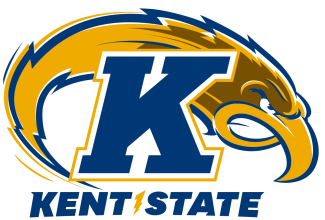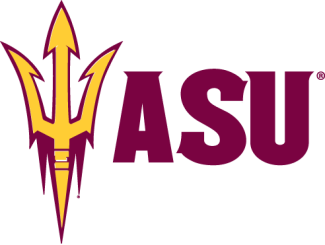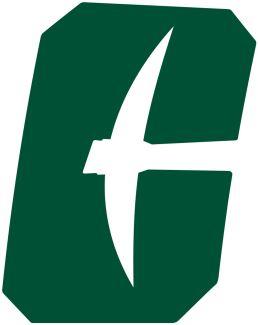You can, after all, teach an old dog new tricks.
Even better: you can teach the old dog to teach those new tricks to his pack.
Such is the story of Haddonfield, N.J., youth coach Dave Robbins. A weekend at the 2017 US Lacrosse Convention (LaxCon), to include classes on becoming a trainer in the US Lacrosse Coach Development Program, forever changed the 17-year coaching veteran’s approach to this all-important craft. And the results showed last spring, in his team’s performance on the field and the experiences his players had during the season.
“It was frightening to learn what I didn’t know,” Robbins, who as a kid learned how to play lacrosse from a college-playing neighbor in Bel Air, Md., said. “I had gone to conventions before, but had never given the sessions my full grasp. I went to the CDP classes, and they were fantastic.”
Since moving to South Jersey in 2001, Robbins credited Haddonfield High School’s Damon Legato, St. Augustine Prep’s JC Valore and Penn Charter’s (Pa.) Pat McDonough as sources of coaching tutelage during a tenure that has included youth and high school positions. He has completed Level 1 of the US Lacrosse Coach Development Program, and decided to take the CDP trainer classes at LaxCon at the urging of a coaching colleague.
“They went over how to deal with parents, players and a league. They were great,” Robbins said. “And then the high school coach from Connecticut [Darien’s Jeff Bramier] — that session was an epiphany.”
The significant growth of lacrosse over the last 20 years someday may render its provincial beginnings less important for future generations than they seem to be for adults these days. But for now, it matters where you cut your teeth on the sport, and such ties among today’s coaches are helping to yield better lacrosse experiences for kids.
Bramier spoke on multi-dimensional offense at LaxCon. Robbins, whose family moved around during his youth, played lacrosse at Fairfield Ludlowe (Conn.) High in the early 1980s. That’s when Bramier was coaching football at Darien, and against the Panthers, before beginning the lacrosse program in 1984. Roughly 16 miles separate the schools.
“That’s how he introduced himself to me after my session,” Darien, who’s built the Blue Wave into a nationally prominent high school program, said. “I coached football against him. We laughed about it.”
Networking remains one of the major benefits of attending LaxCon, and the two stayed in touch after the event. Bramier, who has spoken at LaxCon and other conventions before and often shares resources with coaches as a way to give back, did just that with Robbins.
“That triggered him — how did we make it work in Darien?” Bramier said. “As a community, we created a positive environment for kids through sports. That’s why that town has been successful in all sports — our youth programs do great job feeding the high school.”
Armed with US Lacrosse Athlete Development Model concepts gleaned from LaxCon, Robbins set about his 2017 with Haddonfield’s 14U team focused on reversing one trend and continuing another.
His teams frequently performed well, winning five of eight league titles, he said, but year-over-year retention in the sport proved a trouble. Robbins frequently had rosters too large for one team but not large enough to field two teams.
“The theory was, the good players will not share the ball with those whose skills are still developing,” he said.
In 2016, he worked with a neighboring town to place eight kids on a team that otherwise would not have played much on Robbins’ squad. They did not return to lacrosse the following spring. Change was in order.
“One of the things I learned from the classes is to examine how much time does a kid actually have his hands on the ball,” Robbins said.
With that, Robbins — this season with 24 players and a conviction to retain as many as possible — again worked with neighboring coaches, only this time to institute eight-on-eight small-sided games at a small turf field in town. Wednesday night small-ball, consisting of one less attackman and one less defenseman, put to work players that saw little or no action on the league’s standard gamedays of Friday and Saturday.
“It forced them to be able to touch ball,” Robbins said. “It got them engaged with the ball because of the smaller field. It made each kid better. As the season went along, they were able to contribute to the Friday and Saturday games.”
Dean Hargrove was one player that had a tough time grasping lacrosse and its skills.
“Last year (2016), my stick skills were abysmal and my IQ for the game was very low,” Hargrove wrote in a letter. “It’s the opposite now. I played in every 8v8 game and had more minutes, and I felt more confident in my ability to play lacrosse.
“Another thing, the 8v8 format made it feel like we were all on an equal level. No longer was there the worry of not making the A team.”
“Dean’s mind grasped the game [through the 8v8 format],” Robbins said. “Now on the Friday-Saturday games, I was watching my team set him up on the crease to try to get a goal. It threw out the theory of the good kids not sharing the ball with those whose skills are still developing. This team just wanted to hang out and have fun.”
Hargrove typically plays defensive midfield. He called the 2017 season his best experience to date.
“The team ranged from all skill levels, from multiple first-year players to multiple four-year athletes,” wrote player John McDonnell. “Coach Robbins would disregard skill, and before he mentioned talents or abilities, he would focus on what the player needed to improve on.”
“[Bramier] said to get everyone to know how to throw, catch and scoop ground balls,” Robbins said. “The high school will be much happier getting 20 ‘middle-class’ kids vs. getting two superstars.”
Robbins’ change in approach worked as desired. The squad went undefeated until the league final, and losing by a goal did not dampen his players’ spirits after the game.
“Last year Haddonfield High had 27 players and could barely field a JV team,” Robbins said. “This year, we’re giving them 22 players. It’s great to win in youth ball, but it’s fantastic to win in high school.
“[Changing] was hard, as a 53-year-old man. But if I can learn after coaching for 17 years, imagine what you can learn if you’ve only coached for a few so far,” Robbins said of the benefits of attending LaxCon.
“Networking is crucial to why I stay involved as a speaker at clinics,” Bramier said. “I believe in sharing what I’ve learned — that’s important to growing the sport, and it’s part of what makes lacrosse great.”
LaxCon returns to Baltimore Jan. 19-21, 2018 (info and registration). Before Nov. 30, US Lacrosse members can register for just $90 and non-members can do so for $130, a savings of $35 vs. standard pricing for each rate, respectively.


























































